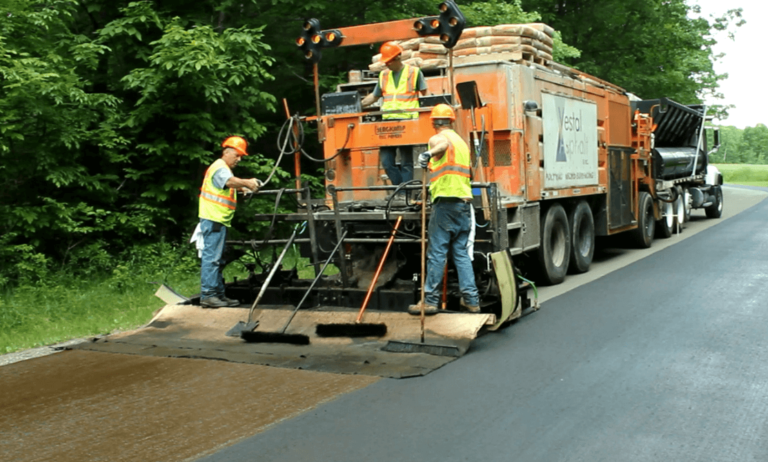Fifteen miles of Asheville roads ride smoother, following the City’s 2019 bond and capital fund paving. And the City’s new Asphalt Preservation Project helped expand the number of streets maintained, while saving taxpayer dollars.
The process can be likened to sealing a deck instead of just letting it rot.
Instead of letting these streets deteriorate, the City hired a contractor to apply a 5/8-inch protective coat in a process called microsurfacing. Streets that benefited from this process include Houston streets, Fairway Drive, Cherry Lane and Wildwood Avenue, among others. In all, 6 miles of Asheville streets were maintained with a microsurface treatment this year.
What is microsurfacing?
Microsurfacing is a protective seal coat which extends the life of pavement. This preventive maintenance process is used to protect and preserve pavement from moisture penetration and oxidation, which contributes to road deterioration.
The video below shows how this process works.
Prioritizing road repair and maintenance
The City of Asheville maintains 412 centerline miles of roads.
Streets Division staff work to maintain our streets — and stretch our tax dollars — by effectively prioritizing their scheduled repairs. It’s not efficient to build or reconstruct our roads and then ignore them for decades until they need high-cost reconstruction. Instead, we use many tools in our toolbox to preserve pavements, selected at the optimal times. Such was the case with the use of microsurfacing this year.
We understand that the microsurfaced roads look a little coarser and the ride on them tends to be a little louder.
“There is a lot of loose aggregate (gravel) when microsurface is put down, to protect the material as it cures,” said Streets Division Manager Chad Bandy. “In response to this, the City Stormwater Division will be sweeping these roads beginning this week.”
In response to some resident concerns about the appearance of microsurface road maintenance, the City of Asheville will add a third option to its toolbox in the 2020 paving season: 1-inch overlays. This is when an inch of asphalt is spread uniformly over an existing road in need of moderate maintenance.
Streets with lots of wear and potholes will continue to be resurfaced, as were 8 miles of roads in Asheville in 2019.
All of these road treatment types will give Public Works works staff multiple methods of maintaining our streets more effectively and efficiently while keeping a close eye on taxpayer dollars.
Better roads for our residents
With the support of bond funding and additional capital funding, Asheville Public Works is making significant improvements to our streets and the stormwater systems that run along and under them.
In addition to these funding sources, a federal Transportation Department grant has helped pay for the rebuilding of Lyman Street and Riverside Drive as part of the River Arts District Transportation Improvement Project (RADTIP) this year. This project supports many modes of transportation, including greenways and bike lanes.
Through allocation of transportation improvement bonds approved by Asheville voters in 2016 and capital funding support approved by Asheville City Council, the City has been able to make more than $4 million in road improvements in 2019.
Stay tuned as more road improvements come in 2020! Two major streets slated for repaving in 2020 include State Street in West Asheville and Kenilworth Road in East Asheville. And Public Works is incorporating an equity tool to ensure that neighborhoods where poverty is present also have their streets and sidewalks fixed and maintained.
